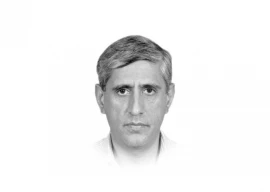
Even as industries across Pakistan struggle with a crippling power crisis that has dramatically increased production costs – and in many cases, even reduced capacity – the power companies continue to charge a lower tariff for companies classified as ‘large-scale’ while charging a higher tariff for smaller manufacturing units.
The National Electric Power Regulatory Authority has divided industrial consumers of electricity into three broad categories. Category B1 – which includes most of the smallest manufacturers – is charged about Rs12.50 per kilowatt hour. Category B2, which is for medium-sized industries, is charged Rs9.50 per unit. But the next two categories – for the largest industrial consumers – are Rs6.50 per unit and Rs 7.50 per unit respectively.
Officials at the Faisalabad Electric Supply Company – one of the eight state-owned power distribution companies in the country – confirmed the discriminatory tariff regime, but were unable to explain why it existed.
Smaller manufacturers have never been happy with the discriminatory pricing regime, but have been absolutely seething about it since the beginning of the current power crisis in 2008. They argue that, at a time when large companies already have several advantages, smaller companies are being squeezed out of the market by blatantly discriminatory government policies which unfairly raise their production costs.
The advantage in power rates for the larger firms is despite the fact that a very large proportion of them have their own captive power generation capacity, most of which run on extraordinarily cheap supplies of gas.
The difference in costs is astounding. A captive power plant at a large textile mill, running on gas, costs that mill about Rs5.50 per unit. Yet these captive power plants do not come cheap, costing anywhere between Rs3 billion and Rs5 billion for a single unit.
“Smaller companies cannot afford that kind of equipment,” said Waheed Raamy, the owner of Raamy Looms in Faisalabad.
Smaller textile companies cannot afford to justify the investment in a captive plant and must instead rely on diesel generators during power outages, which cost Rs31.50 per unit.
One of the equalising factors is the fact that Sui Northern Gas Pipelines – the state-owned company that supplies gas to Punjab and Khyber-Pakhtunkhwa – has started rationing gas supplies, causing even the larger manufacturers to look for alternatives.
The policy discrimination only compounds the market-based factors that smaller companies have to deal with. For instance, larger companies pay lower interest rates than smaller ones.
“An average small manufacturer pays about 18.5% interest on its loans, while a larger company pays closer to 16% on its loans,” said Azhar Majeed Sheikh, chairman of the board at Arzoo Textile in Faisalabad.
With inflation running at around 13.5%, and interest rates as high as they are, many companies have resorted to using pure equity financing, cutting their debts down to zero. But this is a luxury available only to larger companies with the cash flow necessary to build up a large enough reserve.
Mujeebur Rehman, the CEO of Abdul Rehman Corporation, a large textile group in Faisalabad, said that the key to his group’s survival has been not having any debts on their balance sheet, allowing them the financial flexibility to survive any delays in payments or a slowdown in the number of orders.
Published in The Express Tribune, September 17th, 2011.


1727911561-0/Untitled-design-(37)1727911561-0-165x106.webp)







1728037231-0/Untitled-design-(15)1728037231-0-270x192.webp)






COMMENTS
Comments are moderated and generally will be posted if they are on-topic and not abusive.
For more information, please see our Comments FAQ